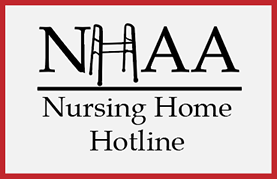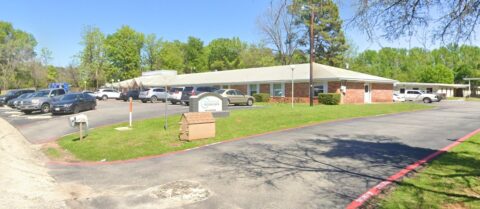State Findings:
Provide appropriate pressure ulcer care and prevent new ulcers from developing.
**NOTE- TERMS IN BRACKETS HAVE BEEN EDITED TO PROTECT CONFIDENTIALITY** 37468
Based on record review and staff interviews the facility failed to place skin protection under the bridge (a section of a wound vac system used to connect the dressing to the vac) of a wound vac (Resident #8) and failed to complete weekly skin audits (Resident #397) for 2 of 4 residents reviewed for pressure ulcer care.
Findings included:
1. Resident #8 was admitted to the facility on [DATE].
Resident #8’s minimum data set assessment dated [DATE] revealed he was assessed as cognitively intact. He was assessed to reject care daily. He required supervision with bed mobility, dressing, eating, toilet use, and personal hygiene. He was independent with transfers. Resident #8 had an indwelling catheter and was always continent of bowel. His active diagnosis included osteomyelitis of vertebra, sacral and sacrococcygeal region, neurogenic bladder, diabetes mellitus, hyperlipidemia, paraplegia, anxiety disorder, and pressure ulcer of the sacral region stage IV. He had one stage IV pressure ulcer which was present upon admission and had a pressure reducing device for his bed and chair, nutritional or hydration interventions, and pressure injury care.
Resident #8’s care plan dated 6/6/23 revealed he was care planned to be at risk for pressure injury related to paraplegia, decrease mobility, diabetes mellitus, and current stage 4 pressure injury present upon admission with osteomyelitis. The interventions included to follow up with reconstructive surgery per recommendations, educate on risk/complications for refusing wound care, lab/x-rays as ordered, notify physician of abnormalities, medication and supplements as ordered to aide in wound healing, wound care services and follow up with recommendations as ordered, monitor wound for signs and symptoms of decline and infection, dietician consult as indicated, encourage treatments as ordered, and pressure reduction mattress is in place to bed and cushion to wheelchair.
Review of Resident #8’s order dated 2/25/23 revealed there was an order to cleanse sacral wound with normal saline, pat dry, and apply wound vac every Monday, Wednesday, and Friday.
Review of a physician’s assistant note dated 2/27/23 revealed Resident #8 was seen by the physician’s assistant due to a fall over the weekend and reports of rib pain. Resident #8 was found packing his bags in bed without difficulty. Resident #8 was concerned with his wound vac care as he felt it was not appropriate and that his wound was worse than when he got here. He requested an emergency room eval. Upon assessment, the physician’s assistant documented Resident #8 had no fever, and his wound vac was intact.
He was to continue by mouth antibiotic through 5/12/23 and continue with wound care and vac. Resident #8 was adamant about an emergency room visit for eval. The resident had a picture of his wound, and the wound had no acute concerns, but the physician’s assistant documented they would send the resident to the emergency room per Resident #8’s request.
Review of Nurse #1’s note dated 2/27/23 revealed Resident #8’s wound care treatment was initiated and a new wound to left hip was noted. Resident #8 requested the nursing supervisor.
The Director of Nursing then went and spoke with Resident #8, and he stated his ribs hurt and needed an x-ray. The supervisor stated the facility could do that in the facility. Resident #8 then requested 911 to be called stating he wanted to go to the hospital. 911 was called.
Review of the hospital discharge summary dated 2/27/23 revealed the physician documented Resident #8 had muscular tenderness to the left rib area without overlying signs of trauma and with a benign abdomen and no midline spinal tenderness. There was no worsening infection of his wound and Resident #8 was currently on antibiotics. The wound appeared to be healing well with no evidence of obvious cellulitis or malodorous purulent discharge appreciated although Resident #8 did have an area of concern to his wound.
The area of concern was observed to have some redness to the lateral aspect of his wound where his wound vac was.
During an interview on 9/25/23 at 11:24 AM Resident #8 stated when he first came to the facility, a nurse changed his wound vac dressing and put it on wrong which resulted in discomfort and redness across his left thigh where the dressing connection ran across his skin from the wound to the wound vac. He concluded he did not know what was put on wrong or why it happened, just that a nurse later that week told him it had been placed incorrectly. He stated Nurse #1 who used to be the wound care nurse, would remember what happened.
During an interview on 9/27/23 at 10:27 AM Nurse #1 stated when Resident #8 came to the facility she had just stepped down as the wound care nurse and had offered to help Resident #8’s hall nurse with wounds on 2/24/23. That nurse stated she was okay because Nurse #8 was helping her with wounds. She stated then on 2/27/23 she did not have an assignment yet and was with Wound Care Nurse #1 when Resident #8 complained about his wound vac. She stated she observed the wound vac as they changed the dressings and saw that the bridge did not have Tegaderm protecting the skin. She stated the nurse applied the wound vac the way that it was supposed to be except the bridge. Because the wound was at the buttock and hip, it needed a bridge to go from the wound to the vac. The nurse did not put Tegaderm on the skin under the bridge to protect the skin from the wound vac suction. She stated he was upset at that point, and she asked
if she could put it on correctly, but he refused and requested wet to dry dressing and did not let any staff put the wound vac back on. She could not remember if the physician’s assistant observed the wound with the wound vac on or if the wound vac was not on him at the time of her assessment. She stated if the physician’s assistant viewed the wound before the wound vac was removed, it would have been impossible to know there was not a clear layer of Tegaderm under the bridge as there was also a layer of Tegaderm placed over the dressing and bridge. The physician’s assistant did round early and most likely saw the wound before she had removed the wound vac dressing as he had been requesting to go to the hospital that morning. The order for the wound vac was canceled due to the resident refusing to have the wound vac placed correctly. She stated when she removed the wound vac there was an abrasion to his skin approximately two inches long and a quarter inch wide where the wound vac bridge was from his left buttock to his left hip. This was
the new area she documented in her note. She stated the wound nurse let the Director of Nursing know about the wound vac being placed incorrectly and about the abrasion to the resident’s skin. The abrasion healed in a matter of days and his wound was healing and had reduced in size.
During an interview on 9/27/23 at 11:33 AM the Director of Nursing stated that the previous Wound Care Nurse #1 came to her shortly after Resident #8 was admitted and informed her that Nurse #8 had placed the wound vac on Resident #8 incorrectly. She was told the dressing was put on without skin protection under the bridge to the vac which caused an abrasion to his left buttock and hip. She stated he was very upset when she went to the room to assess him, and Resident #8 did now allow her to assess the wound or replace the wound vac. He requested to be sent to the hospital which the facility complied with. When he returned, he refused to have staff change his wound vac dressing as ordered and was changed to a wet to dry dressing. The Director of Nursing stated Nurse #8 was educated about wound vac use but none of the other staff. She concluded there had not been any other wound vacs in the facility since then. She concluded the wound vac should have had skin protection under the bridge to the wound vac when applied in order to protect the skin from the suction of the vac.
During an interview on 9/28/23 at 11:43 AM Nurse #8 stated she remembered Resident #8 and that she was helping the nurse on that hall with wound care. She further stated she was unable to recall exactly how she placed the bridge to the wound vac or if Resident #8 required a bridge for his wound vac.
During an interview on 9/28/23 at 11:54 AM Wound Care Nurse #1 stated she was being trained by Nurse #1 and did not remember the dressing change on 2/27/23.
During an interview on 9/28/23 at 12:06 PM Physician’s Assistant #1 stated she vaguely remembered the visit with Resident #8 on 2/27/23. She further stated he was adamant he wanted to go to the hospital that day due to his fall and that he believed his wound had worsened. She stated he had a picture of his wound from when the dressing had been replaced and she saw no concerns with the wound in his picture. She stated the wound vac was in place when she assessed him, and she told him to wait until wound care to remove the dressing in order to disrupt the site as little as possible. She stated she was not present during his dressing change and only visualized the wound with the dressing intact on 9/27/23.
During an interview on 9/28/23 at 2:16 PM Wound Care Nurse Practitioner #1 stated Resident #8 refused to allow her to visualize his wound, so she had not done any recent assessments. She further stated she was not involved or aware of any concerns with Resident #8’s wound vac as he did not have it when she began providing care to him. She concluded if a bridge to a wound vac was left against a patient’s skin for a long time, and no Tegaderm was placed under the bridge to protect the patient’s skin, the pressure of the wound vac suction could cause the development of a pressure injury to the patient’s skin under the bridge if it was not corrected.
41387
2. Resident #397 was admitted to the facility on [DATE], and diagnoses included Alzheimer’s and
non-Alzheimer’s dementia. The care plan dated 12/02/2021 indicated Resident #397 was at risk for pressure injury. Interventions included conducting weekly skin checks by the nurse. The care plan was updated on 9/20/2022 to record pressure injuries to both the right and left heel that were dated resolved on 11/01/2022. There was no documentation on the care plan indicating the resident developed a sacral wound.
A review of the medical record from September 2022 through January 2023 revealed there was one documented skin focused observation/weekly skin assessment dated [DATE] and recorded a skin tear to the
hand.
A review of nursing documentation from September 2022 to January 2023 in the electronic medical record did not record a pressure wound to the sacral area on Resident #397 nor record a right and left heel pressure wound since November 2022.
The quarterly Minimum Data Set (MDS) assessment dated [DATE] indicated Resident #397 was severely cognitively impaired and required extensive assistance of one person for toileting and bed mobility. The MDS further indicated Resident #397 was a risk for developing a pressure ulcer but was not marked as having a pressure ulcer.
A wound care physician note dated 1/5/2023 reported an unavoidable unstageable pressure ulcer measuring 4 centimeters (cm) x 5.3cm x 0.4cm was present on the sacral area of the body. The wound care physician documented the sacral pressure wound had been present for less than one week. The sacral pressure wound was described as black and yellow in color with eighty-five percent of the tissue necrotic (dead tissue) and fifteen percent granulated (new connective tissue) with an odorless mild serous drainage from the wound. Treatment was provided and sharp debridement for the wound bed was planned after receiving consent from Resident #397’s responsible party.
Physician orders for Resident #397 dated 1/6/2023 requested a consultation for sharp debridement by the wound care physician and a dietician consultation due to a non-stageable pressure area on the sacral area. Physician orders also included cleansing Resident #397’s sacral area with a 0.25% diluted sodium hypochlorite solution moisten gauze, applying medical grade honey to the wound bed every day and covering with a dry dressing.
On 1/8/2023, the Physician ordered to clean the right and left heels with normal saline and apply a skin preparation every day.
Dietary notes dated 1/10/2023 reported Resident #397 was being followed by the wound care team for a sacral wound and a right and left heel deep tissue injury. The Dietician noted that due to Resident #397’s decline in his oral intake and dehydration, Resident #397 had received intravenous fluids.
In an interview with Nurse #2 on 9/28/2023 at 12:43 p.m., she stated she was unable to recall Resident #397 having a sacral pressure wound. She explained residents were to receive weekly skin assessments. After reviewing Resident #397’s chart, she stated she did not know why there were no weekly skin assessments or focused skin observations documented on Resident #397’s electronic medical record.
In an interview with Nurse #1 on 9/28/2023 at 1:09 p.m., she stated while serving as the wound nurse from July 2022 to December 31,2022, she did not recall Resident #397 having a sacral pressure wound. She stated skin assessments were to be conducted weekly, and there were no weekly skin assessments or focused skin observations documented for Resident #397 in the electronic medical record. Nurse #1 had no explanation as to why the weekly skin assessments had not been conducted.
In a phone interview with Nurse #12 on 9/29/2023 at 12:13 p.m., she recalled Resident #397 developing blisters on the right and left foot that resolved with skin prep treatments and wearing protective boots. She stated Resident #397’s weekly skin assessments would have been conducted on the second shift, and she didn’t have an answer to why weekly skin assessments for Resident #397 were not conducted or documented. She explained prior to Resident #397 being moved to another unit on 12/26/2022, she did not recall Resident #397 having a sacral pressure wound.
In an interview with the Director of Nursing on 9/29/2023 at 10:48 a.m., she explained all residents were placed on weekly skin assessments as part of the standard of care to monitor skin changes. She stated Resident #397 had an order for skin audits written on 5/17/2022, and the nursing staff, who were responsible for performing weekly skin assessments, should have conducted and documented Resident #397’s weekly skin assessments. She explained Resident #397’s health declined, and a sacral pressure wound was identified on 1/5/2023. The Director of Nursing explained team members were assigned to monitor the performance of skin assessments weekly on the units and was unsure why Resident #397’s weekly skin assessments not being completed had been missed except possibly the resignation of the team member.
She stated in that case, she would have assumed responsibility of the monitoring of the skin assessments on the unit, and due to her workload, she was not able to complete the monitoring of skin assessments for Resident #397.
Your Experience Matters
...and we want to hear it.
NHAA is here to assist families, residents, and the community by sounding the alarm on issues like those found above. This nursing home and many others across the country are cited for abuse and neglect.
If you have or had a loved one living in this nursing home or any other nursing home where you suspect any form of abuse or neglect, contact us immediately.
We have helped many already and we can help you and your loved one as well by filing a state complaint, hiring a specialized nursing home attorney or helping you find a more suitable location for your loved one.
You can make a difference, even if your loved one has already passed away.
Please give us a call at 1-800-645-5262 or fill out our form detailing your experience.
Personal Note from NHA-Advocates
NHAA shares with all the families of loved ones who are confined to nursing homes the pain and anguish of putting them in the care of someone else. We expect our loved ones to be treated with dignity and honor in the homes we place them. We cannot emphasize enough to family members of nursing home residents; frequent visits are essential to our loved ones’ well-being and safety.
If you are struggling and upset, click here to understand your options, or contact us through our contact form or call our toll free hot line number: 1-800-645-5262.






